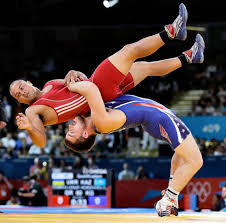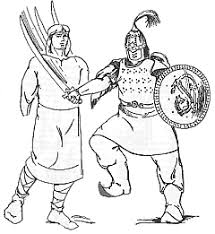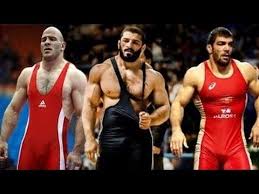FIGHT IN ANCIENT RUSSIA
 In Russia, wrestling has always been popular. Along with fist fights, it was both entertainment and a vital necessity: wars in Russia practically did not stop. The fight also had a cult significance – the so-called bear fight. Among the ancient Slavs, the bear was considered the patron and protector. The fight in honor of the bear was carried out on the field before the start of sowing: it was believed that this would save the future crop. Several other types of wrestling arose from the bear one: such as wrestling in the “cross” – martial arts in a stand with mutual capture, as well as wrestling with a live bear – fair entertainment with a trained beast, as well as a kind of skill test – a one-on-one struggle with the owner the woods.
In Russia, wrestling has always been popular. Along with fist fights, it was both entertainment and a vital necessity: wars in Russia practically did not stop. The fight also had a cult significance – the so-called bear fight. Among the ancient Slavs, the bear was considered the patron and protector. The fight in honor of the bear was carried out on the field before the start of sowing: it was believed that this would save the future crop. Several other types of wrestling arose from the bear one: such as wrestling in the “cross” – martial arts in a stand with mutual capture, as well as wrestling with a live bear – fair entertainment with a trained beast, as well as a kind of skill test – a one-on-one struggle with the owner the woods.
From the pagan representations of the Slavs, the system of training the necessary fighting qualities, survival skills, and “medical knowledge” passed into the struggle. The combat training was based on pagan symbols and concepts: the circle – the cult of the Sun, the principle of conservation of energy, white-god and black-god – positive and negative movements from oneself and to oneself, etc.
Fighting (pugilism) was a way of resolving legal disputes (the relevant provisions are recorded in Russian Truth), and sometimes international conflicts. The Lavrentievsky Chronicle (993) describes how the Russian prince agreed to decide the outcome of the battle with the Pecheneg army using a duel between two heroes. The Russian warrior tore the Pecheneg from the ground and strangled him – that was all over.
The Orthodox Church did not encourage sports hobbies in general – and martial arts in particular. At a church council in Vladimir in 1274, Metropolitan Cyril declared that the people still followed the customs of worthless Hellenes and were engaged in demonic games – fist fights. But despite numerous attempts to ban wrestling and fist fights, it failed.




